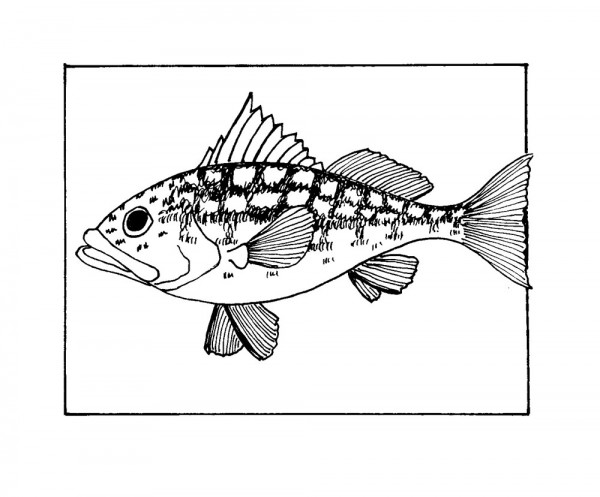Catching Sight of Calico Bass

Commercial fishing of calico bass (Paralabrax clathratus) in California has been banned since the 1950s because of overfishing after World War II. Since then, they have rebounded and although still recreationally fished within size limits, the numbers are considered stable and expected to rebound even further due to the implementation of the Marine Protected Areas in our state. It is one of the few fish you can count on seeing almost every time you go snorkeling in Laguna Beach. Active during the day and taking shelter at night, the calico bass has a range from Washington to Baja California. Located throughout the water in Laguna Beach up to depths of 150 feet, it is most abundantly found in shallow water throughout the kelp beds and around the rocky reefs. Reaching a maximum size of 29 inches, its upper body is dark brown to olive-green mottled with rectangular blotches of off-white that gradually lighten to a pale belly. Sexually dimorphic, the area under the chin is slightly orange in color in the male. The paired fins and tail have a slight yellowish tint. The mouth is large and the upper portion of the pointed head has pale yellowish spots. Although the average life span is 10 to 12 years, calico bass as old as 34 years have been found.

Slow growing, they reach sexual maturity between 2 to 5 years. It is thought that the calico bass spawns in the late afternoon to early evening in conjunction with new and full moons. During spawning, both males and females darken in color with the female temporarily losing her lighter spots and the male developing black bars that overlay his lighter blotches. Pelagic spawners and able to spawn multiple times in a single evening, they form large aggregations and simultaneously release their eggs and sperm into the water column. Several hours after fertilization, the eggs hatch into larvae and are carried by currents for about one month until they settle in the shallows on kelp where they transform into juvenile fish. Remaining in the kelp forest for protection, they move into deeper and deeper waters as they get older and larger.
Calico bass are carnivores and considered a keystone species that play a crucial role in the ecosystem both as predator and prey. Juveniles eat plankton, crustaceans and other small benthic invertebrates such as shrimps and crabs found on or near the sea floor. As they grow, their diet starts including more and more small fish such as anchovies and surfperch as well as squid and octopus. Predators of larval and young calico bass are too numerous to list, but adults are eaten by larger carnivores such as California barracuda, giant black sea bass, humans and occasionally larger members of their own species. In fact, the fish is one of the most common nearshore game fishes taken by fishermen, and it is estimated that over 1 million are caught recreationally each year. Calico bass are a heavily monitored fish because of the threat of overfishing. However they are currently listed as of least concern on the International Union for Conservation of Nature list of threatened species. Within Laguna Beach’s no-take marine reserve, they are relatively docile and generally ignore you enough to allow a very close approach. Look for them around the kelp beds.
Mia Davidson and artist Jan Sattler are residents of Laguna Beach and year-round ocean swimmers who want to remind you that Laguna Beach is a state marine reserve, where collecting or fishing is forbidden.





Thanks for the interesting info on calico bass. I swim year-round too.